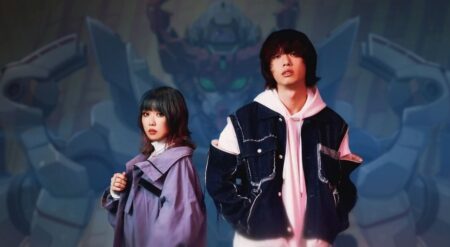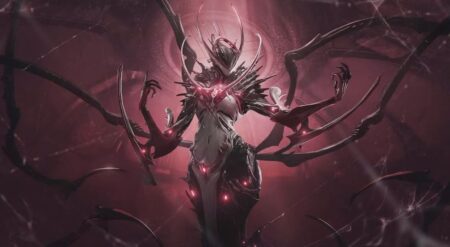
Writer’s Note: This interview with Tom Waltz has been edited for clarity and brevity
Teenage Mutant Ninja Turtles: The Last Ronin debuted last week, and it was a story that was literally years in the making. Based on a concept by co-creators Kevin Eastman and Peter Laird, the miniseries features the last surviving Ninja Turtle as he attempts to navigate a desolate future and exact vengeance for his brothers. After reviewing The Last Ronin‘s first issue, I spoke with Tom Waltz, who helped co-write the series. We discussed the series’ conception and how Waltz worked with his fellow artists, as well as why the Turtles continue to endure 30 years after their creation.
But Why Tho?: Thank you for taking the time to talk with me! How did you come to work on The Last Ronin?
Tom Waltz: Ronin is like 30 years in the making but for me, it was 10 years in the making. What happened was back in 2011 I started writing the main TMNT series for IDW. I was working alongside TMNT co-creator Kevin Eastman, who was helping co-plot the stories, and editor Bobby Curnow. And we were coming up on issue 100, and I had written every issue up to that point. And we started to talk about “What does a post-100 world look like?” Because early on we had a big story we wanted to tell and at #100 we would have told that story. We felt like “OK this is kind of a crossroads for the series. We told our big story, do we continue or do we look for a fresh voice?”
So we reached out to Sophie Campbell, who’s a wonderful artist and writer. We felt like this was the time to shift away from us and let Sophie give the book a new direction. That being said, Kevin and I weren’t done telling Turtle stories. We still love the Turtles and want to do more. And Kevin…he calls himself a hoarder, but I call him a “master archivist”-he never throws anything away. He pulled out this old outline called The Last Ronin that he and Peter Laird had been working on in 1987. And he said “Hey here’s this story we’ve been talking about way back in ’87 that might be the last Turtle story that we might tell… you want to check it out? Maybe there’s something there.” I sat down and looked at it and I fell in love with it right away. It was this big wonderful beautiful outline full of Nostrodamus predictions for the future. I told Kevin, “I think that Peter Laird had a time machine because a lot of his notes were about future technology and politics and social realities-he nailed it!” So we reached out to Peter and asked if he would be ok with taking this idea and adapting it for The Last Ronin, and he was all for it. And the rest was history.
But Why Tho?: You said that The Last Ronin has some new elements in addition to the original outline. Where there any other elements that you felt would be perfect for the story.
Tom Waltz: A lot of them are character elements. Some things I remember from the outline were very general, so we added some specifics. As with the 100 issues we wrote in the main series…Once you sit down and you start spitballing, one idea begets another idea and you really feed off of each other. So we came up with some new elements. We added in a secondary antagonist that works perfectly with the futuristic aspect, specifically the technology. And what we found was that not only were we bringing this old outline to life, we were bringing a whole new Turtles universe to life. Our biggest inspiration is undoubtedly Frank Miller’s Dark Knight Returns…we wanted this story to be something that Turtles fans, whether they like the Fred Wolf cartoons or our IDW book or Mirage or whatever it may be that got them into Turtles, that there were enough generalities for them to jump right in. You know who the Turtles are, you know who Master Splinter is, you got an idea of who the Foot Clan is…the challenge was telling a story that felt all-encompassing.
But Why Tho?: I’ve read and reviewed the first issue, and I could definitely see this universe expanding in the same way that Frank Miller’s Dark Knight Universe.
Tom Waltz: Oh yeah! There’s things we weren’t even talking about when we starting putting this idea together…maybe a new origin. Maybe there’s past stories we want to tell. There’s definitely future stories we were talking about. I told Kevin he and Peter created something that was so unique. The first Turtles was lightning in a bottle…a miracle of pop culture. The most amazing thing is the miracle repeats. This property never wants to go away. There’s always new ways to make it exciting and fresh even though at its heart it’s the same story. It’s a family trying to survive in dire circumstances.
But Why Tho?: You mentioned that you drew inspiration from The Dark Knight Returns, and The Last Ronin also reminded me of the “Days of Future Past” storyline from X-Men. How do you think Ronin stands out compared to those stories?
Tom Waltz: I hope in a similar fashion, especially with Dark Knight Returns. The biggest goal we had for this, once all is said and done, is that it’s an evergreen property for years to come. Whether you’re following Batman monthly or not, whether you’re watching the movies or not, you can pick up Dark Knight Returns and dive right in. What we’re hoping is that this is just one of those stories that doesn’t go away, like Watchmen or V For Vendetta. We’re hoping that it falls in that area…we would be liars if we said we weren’t stealing from everyone. If it worked once, why not twice?
The key for it, I think, is it’s easy to say “Oh this is a dark and gritty story.” And it is. It’s very sad and tragic in some ways. But there’s always got to be that underlying glimmer of hope, especially with Turtles. “This is bad, but it doesn’t have to stay that way.”
But Why Tho?: You have a great creative team; in addition to working with Kevin Eastman you also have Esau and Issac Escorza on art duties. What’s it like working with them?
Tom Waltz: Andy Khun was originally going to be the series artist, but dropped out due to personal reasons. We were actually well into #1 with Andy when we had to make the change. Issac and Esau had done some work with Kevin on Heavy Metal and he said, “I know these two brothers…they might be our solution.” And they came in and Kevin sent them some test layouts and the artwork came rolling in. Not only are these guys talented, they’re lightning fast. And that was a huge huge help in making this book. It was late, but it could have been MONUMENTALLY late…that was something we didn’t want to have in common with the great books of the past. We didn’t want to be that late! (Laughs)
The thing that really excites me about this is that I’m also an editor at IDW. And as long as I’d been writing Turtles, I was also editing Ghostbusters for IDW. And we had a long-running team including colorist Luis Antonio Delgado. We needed a new colorist and I reached out to Luis and asked “Would you be interested?” and he leaped at it. This is the chance for Luis to really shine and he took advantage of this opportunity…it looks really wonderful. I feel blessed to be part of the team.
But Why Tho?: I don’t want to spoil anything, but the identity of the last Turtle was a surprise. Was it in the original outline? What made this Turtle the perfect choice?
Tom Waltz: It’s funny…I don’t remember if it was in the outline specifically, but I do know this is the Turtle Kevin wanted from the first moment we started talking about it. There was never a doubt in his mind who it was going to be. I think it also adds that element of surprise when all is said and done.
But Why Tho?: Between writing the ongoing TMNT series and The Last Ronin, what draws you to the Turtles as a writer?
Tom Waltz: Here’s the thing. The funny thing is that I get asked that question a lot, and Kevin does too at signings and interviews. What I realized after 100 issues was…what really drew me-the big picture is this: It’s family. This story is about family. There’s not just the Turtles, there’s Casey and April and even elements of family in the Foot Clan. The key to the success was never the swords and nunchuks and ninja action. At its core, it’s a family story. I’ve never fought in an alley against ninjas myself, but I’ve had arguments with my sisters. And I think that’s the king of thing within Turtles that’s the draw. It’s this family element.
In the main series, all along I was telling a Splinter story. I’m coming at this story from a different perspective. I’m coming at it as a dad. My feelings for the property have evolved. Now with The Last Ronin, I can now relate to a Turtle because he’s an old guy. Ronin was the next natural step for me.
After the interview with Waltz, I can understand why he was chosen to co-write The Last Ronin. He not only is a fan of the property, he also understands how it works and why it endures. And when writing a story that basically is “The Last Teenage Mutant Ninja Turtles Story Ever,” that comes in handy.
TMNT: The Last Ronin #1 is available wherever comics are sold.






